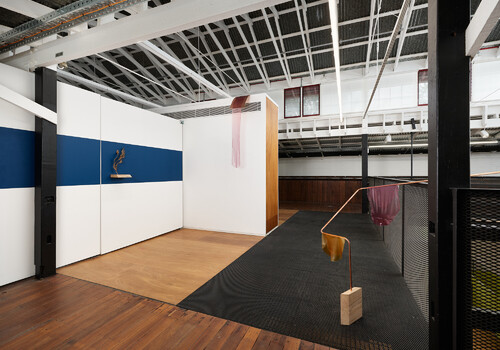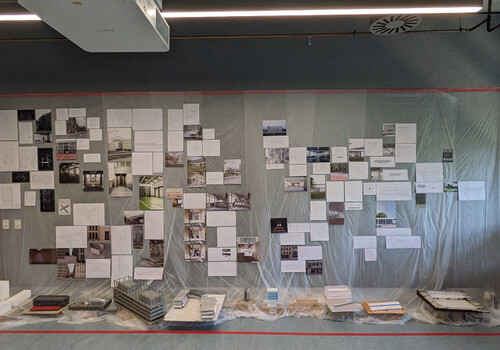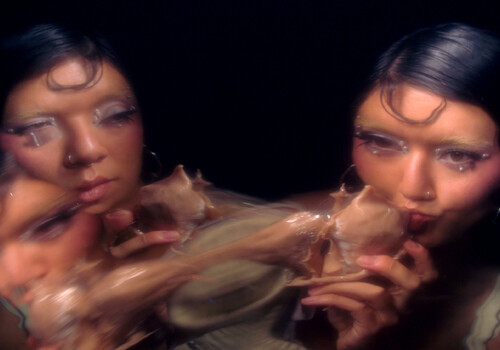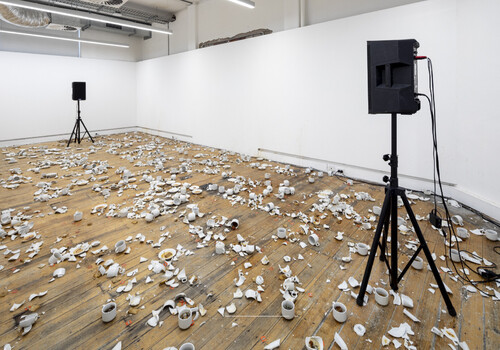Bachelor of Fine Art, Monash Art, Design and Architecture
By Jennifer Alvin
“Let’s say there’s a plastic toy car or a little figurine. If I think about touching it or the surface of it, I start feeling nauseous and I might gag …”
—Reddit post on the irrational fear of plastic toys
“Ludilophobia is the fear of toys—apparently from the Esperanto word for ‘toy’ (who knew?)”
—Phobiapedia
Ching2 Liang’s proximate installations, Mixed Rice and The Moon is full and … are a ludilophobe’s nightmare: one entire white gallery wall of meticulously arranged, lollypop-hued, colour-, size-, and type-coordinated plastic toys perched on shadow box style shelving, facing five low plinths, each holding a small elaborately upcycled toy building, with other little toys inside. At first look (for the non-ludilophobic), it is a super cute, cleverly curated, rainbow coloured gem of Duchampian readymade crossed with Warholian ironic pop mass consumer culture kitsch: a not-uncommon contemporary art genre mix. It is well executed and pleasing; the little toys are painstakingly placed into little matched groupings or tiny domestic scenes (cooking, householding, vehicles etc.), all neat and even and shiny, nothing jammed or jumbled, nothing scratched or dirty.

The sheer number of small bright plastic objects and the fastidiousness of their placement draws the eye compulsively and repetitively over them. After a few minutes I found myself thinking: why am I still looking at this? I felt a strong impulse to make meaning out of these displays, perhaps not in spite of the meaninglessness of the objects themselves, but because of it.

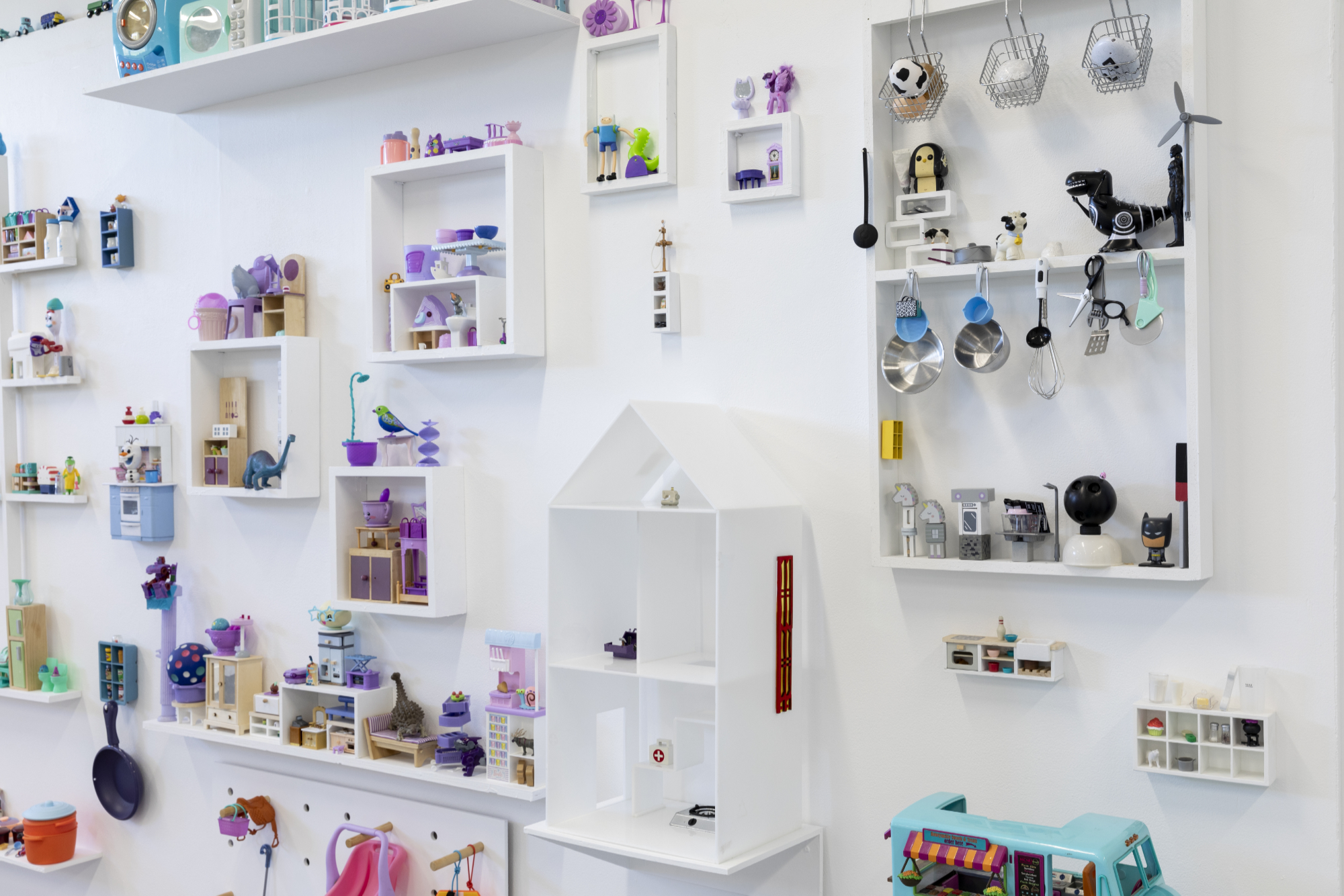
Maybe these works speak to our collective ecological ludilophobia, the fear and revulsion engendered by the disastrous overproduction, overconsumption and wasteful discarding of plastic, particularly cheap plastic toys. The artist labels her hoard of little plastic things “serendipitous found objects, recycled toys,” which, in the context of the environmental catastrophe of the earth suffocating in plastic waste, actually sounds sinister. If Mixed Rice and The Moon is full and … carry an ironic environmental message, it is a subtle and ambivalent one.
But still … I keep scanning all those miniature replica human artefacts.

Maybe the meaning goes a bit deeper. I peer into the dolls’ houses, and contemplate the tiny domestic tableaux. They convincingly evoke life-sized domestic spaces and routines: cosy, enclosed, private, distracting, but also flat, superficial, full of meaningless faux-cheerful stuff, lonely, separated, isolated. Maybe the works tap into a kind of existential ludilophobia, our fear of finding ourselves in empty plastic doll-house lives with only a little blanket of plastic junk to keep us warm and a little plastic screen to keep us company.
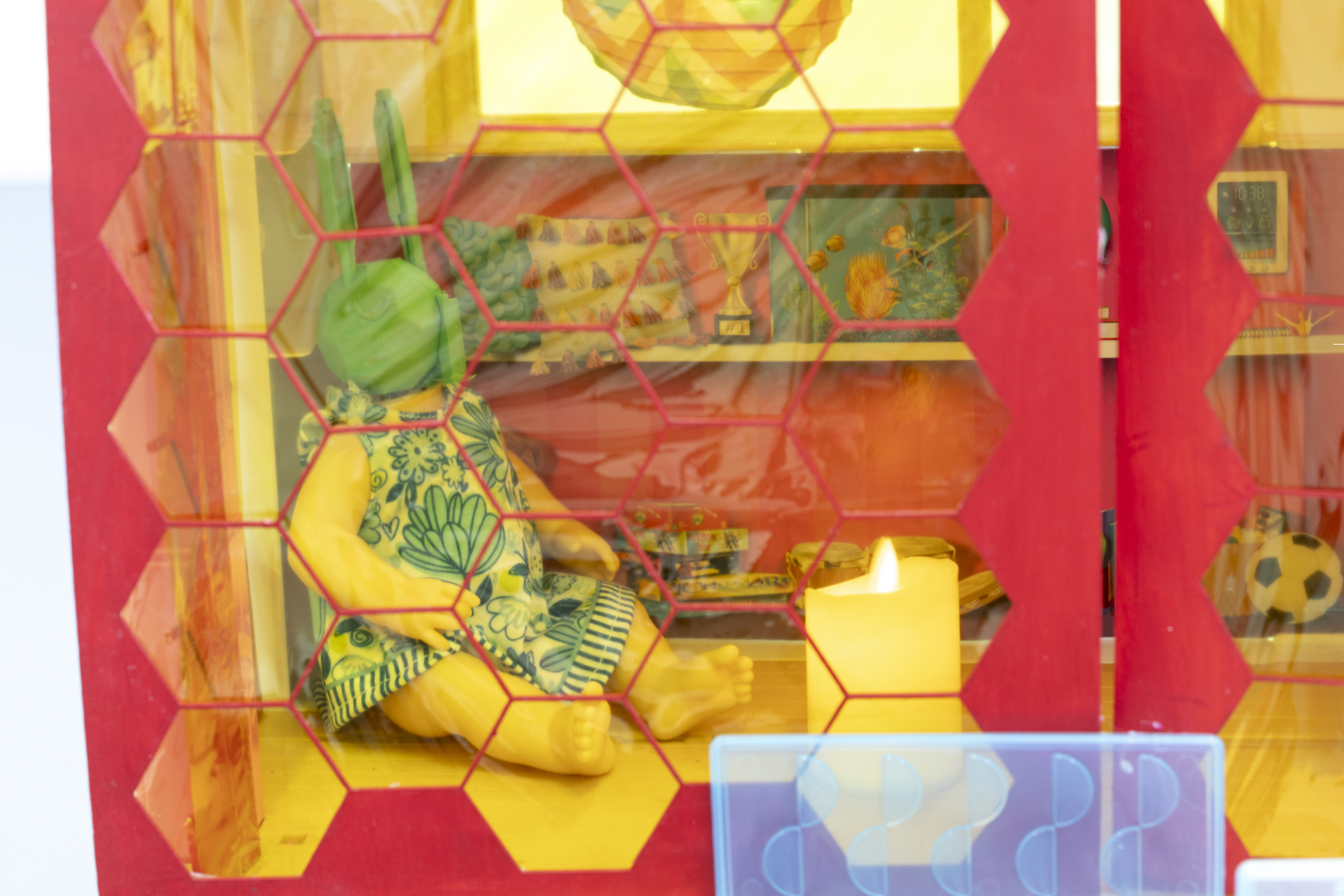
Then again, maybe it’s all of the above, or none of them. Maybe a plastic toy is just a plastic toy, even in multicoloured serried arrays and carefully crafted dioramas, either nauseating or delightful, depending on your taste. Mixed Rice and The Moon is full and … are strange works, simultaneously cute and menacing, childish and political, meaningless and layered, brightly coloured and disturbingly dark. Or maybe I’m just a ludilophile (if that’s even a thing).
Jennifer Alvin is an Art History and Curating student at Monash University.




